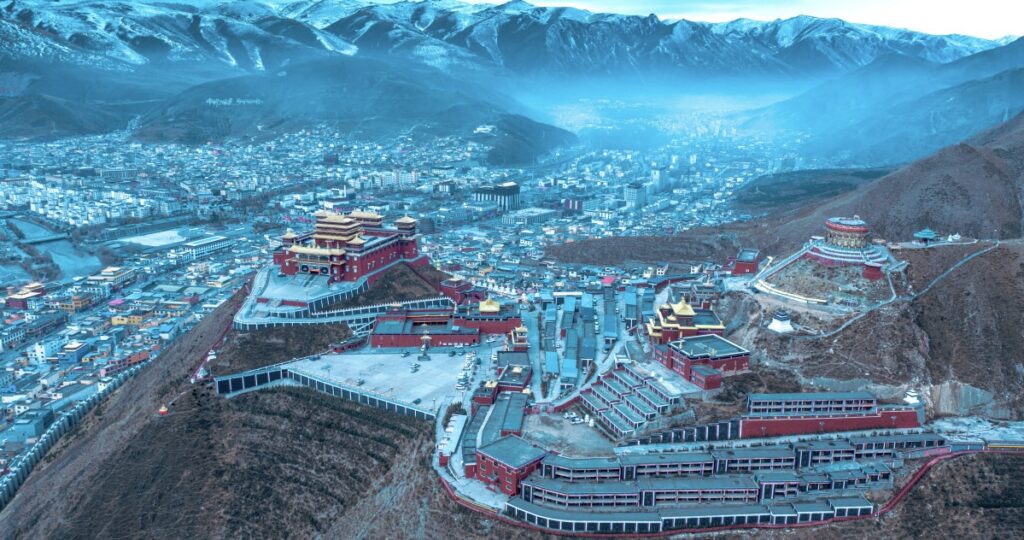
Jyekundo (also known as Gyêgu or Yushu City) is the main town of Yushu Tibetan Autonomous Prefecture in Qinghai Province, China. Situated in the Kham region of Tibet, Jyekundo sits at an altitude of over 3,700 meters (12,139 feet), surrounded by snow-capped mountains and vast highland grasslands. This town is an important cultural and historical center for the Tibetan community, blending natural beauty with a rich spiritual and cultural heritage.
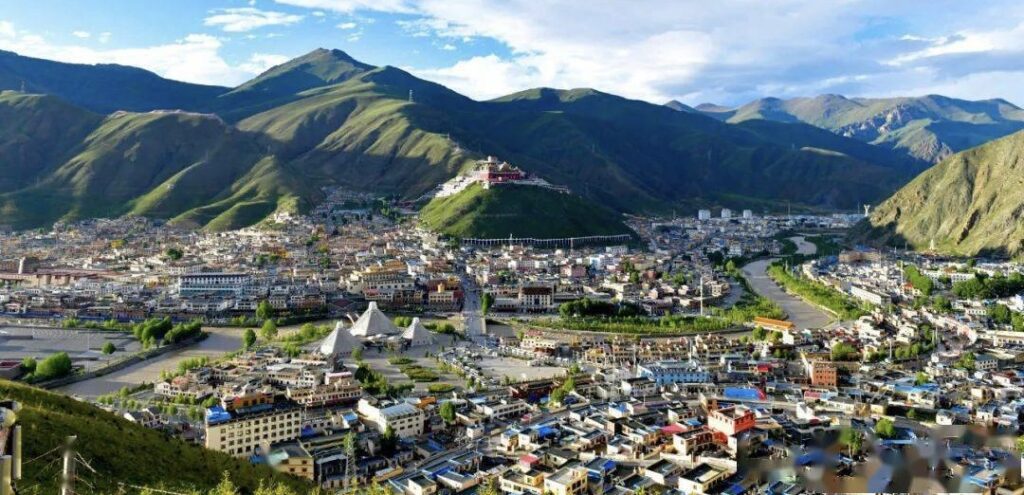
Location and Geography: Jyekundo lies in a high-altitude plateau area in eastern Tibet. It is part of Yushu Prefecture, which is known for its vast grasslands, rugged terrain, and cold climate. The landscape around Jyekundo is characterized by snow-covered peaks, expansive plains, and the source of the Yangtze River nearby, which is highly revered by locals.
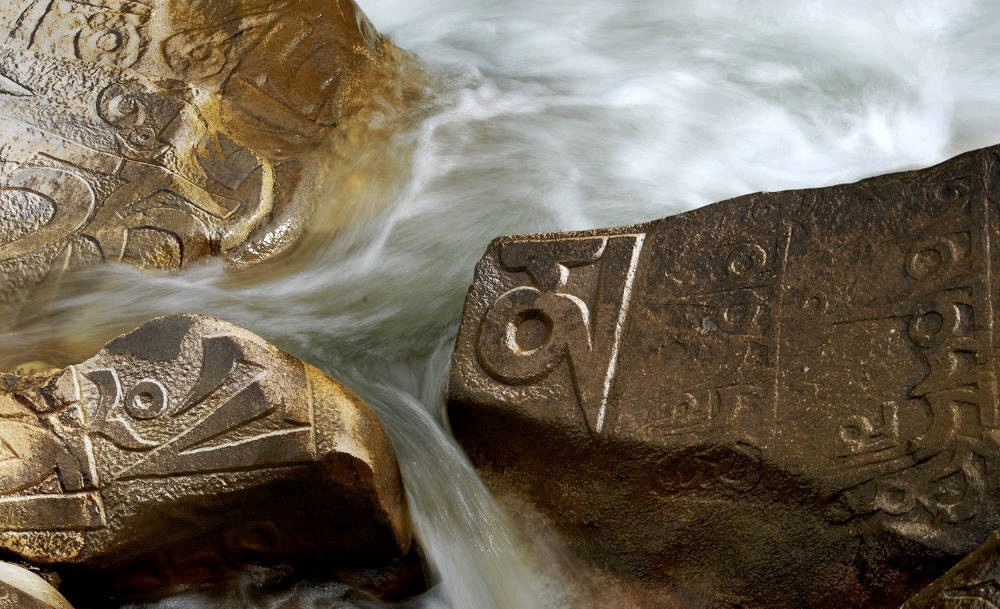
Cultural Significance: Known as a traditional Tibetan cultural hub, Jyekundo is home to Tibetan Buddhists of the Kham region. The town has a long-standing history as a center for trade, pilgrimage, and religious practices. In recent years, it has also become a site of cultural preservation efforts for the Tibetan way of life, despite modern influences.
Jyekundo Gompa (Gyêgu Monastery)
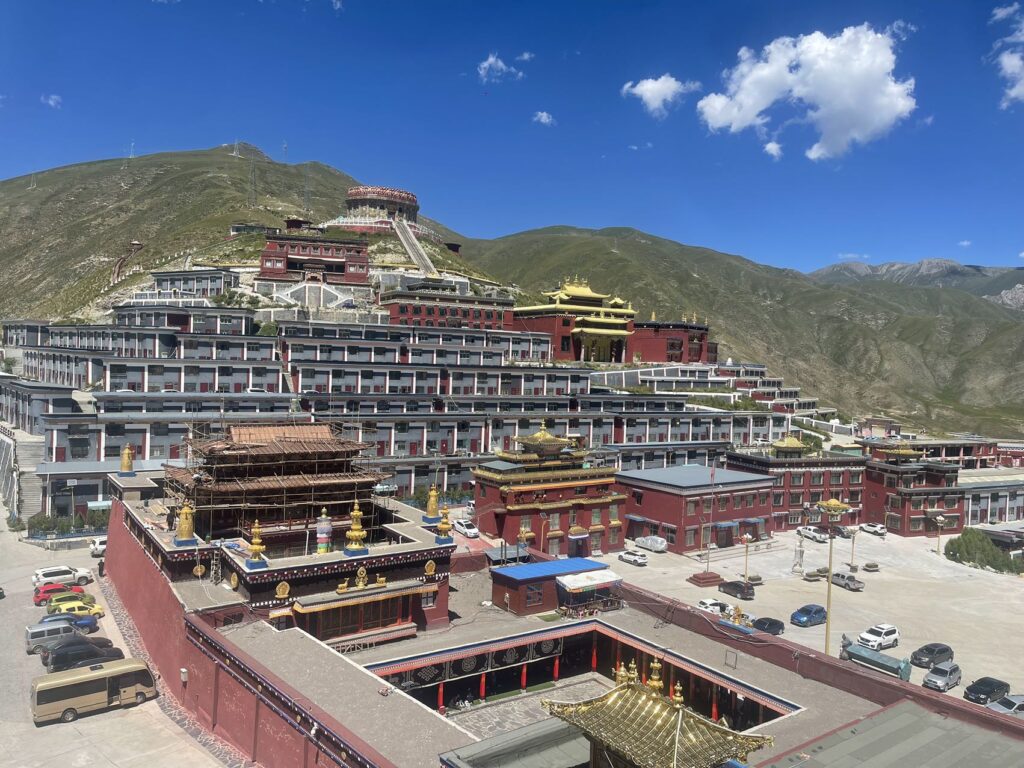
Jyekundo Dondrub Ling, a major Sakya monastery in Jyekundo, Kham, was built on the site of earlier Bon and Kagyu monasteries. The Sakya presence was first established by Pakpa Lodro Gyeltsen, and then expanded into a formal monastery in the fifteenth century by Dakchen Sherab Gyaltsen.
The monastery has traditionally played a significant role in the spiritual life of Jyekundo’s Tibetan community and holds regular prayer ceremonies and Buddhist festivals attended by locals and pilgrims from the surrounding areas.
Princess Wencheng Temple
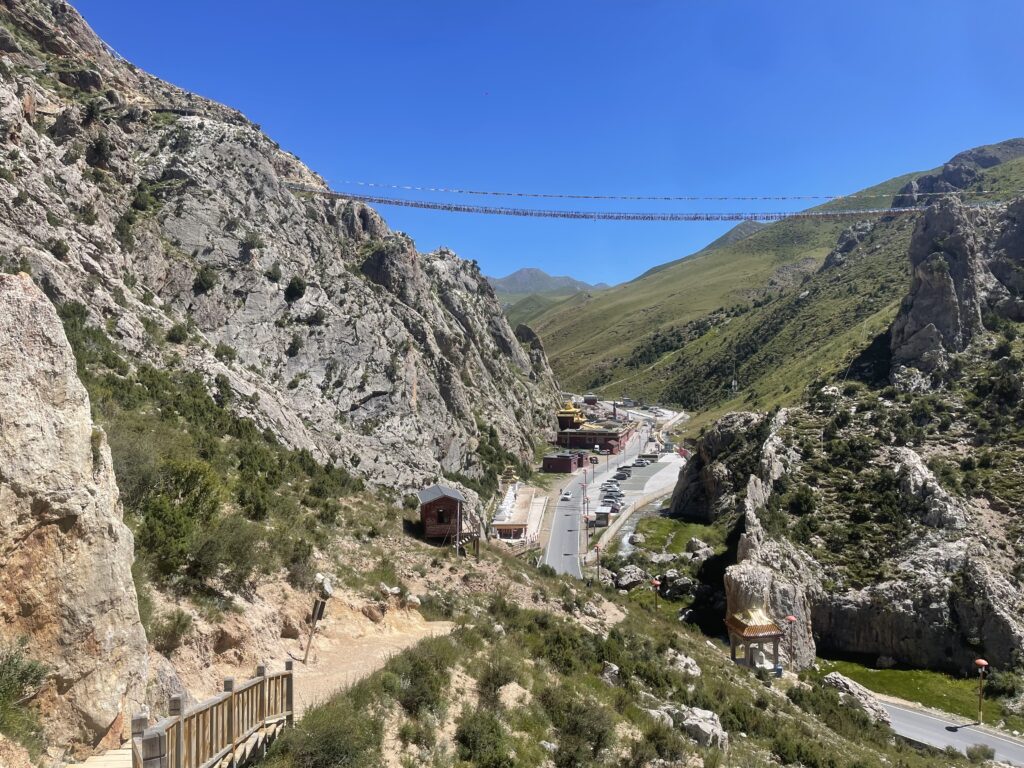
This temple is dedicated to Princess Wencheng, a Tang dynasty princess who is an important figure in Tibetan history for her symbolic role in the spread of Buddhism in Tibet. It is believed she passed through the area on her way to Lhasa to marry King Songtsen Gampo.
The temple houses a large, revered statue of Avalokiteshvara (Bodhisattva of Compassion), making it an essential pilgrimage site. The temple is an example of Tibetan-Chinese architectural fusion and holds an annual festival commemorating Princess Wencheng’s legacy.
Mani Stone Wall (Māní Chéng)
The Mani Stone Wall in Jyekundo is among the longest in the world, stretching for several kilometers and containing thousands of carved prayer stones inscribed with mantras, particularly the Om Mani Padme Hum mantra.
This site is of immense spiritual significance, drawing pilgrims who add to the wall and perform kora (circumambulation) around it as a form of prayer. The Mani Stone Wall stands as a testament to the deeply rooted Buddhist beliefs and practices of the local Tibetan population.
Gyanak Mani Temple
Located near the Mani Stone Wall, Gyanak Mani Temple is another prominent religious site in Jyekundo. Known for its numerous statues and prayer flags, the temple is a gathering place for Tibetan pilgrims who come to pay their respects, spin prayer wheels, and make offerings.
The temple complex is also an important cultural space where religious ceremonies, festivals, and rituals take place, drawing people from surrounding villages and regions.
Three Rivers Nature Reserve
The Three Rivers Nature Reserve is located near Jyekundo, encompassing the sources of the Yangtze, Mekong, and Yellow Rivers. This protected area is of great ecological and cultural significance, as it is home to various unique species and provides essential resources for the people and wildlife of the Tibetan Plateau.
The reserve’s high-altitude grasslands and river valleys offer stunning scenery, making it a popular destination for trekking, nature photography, and eco-tourism.
Annual Festivals and Local Culture
Yushu Horse Racing Festival: One of the most popular events in Jyekundo, this festival is held every July and is a vibrant display of Tibetan culture, horsemanship, and traditional sports. The festival attracts participants and spectators from across the Tibetan regions of Qinghai, Sichuan, and Gansu. During the festival, there are horse races, yak races, archery contests, and traditional Tibetan performances.
Losar (Tibetan New Year): Celebrated with much fervor, Losar brings the local community together to participate in rituals, feasts, and cultural events. Monasteries hold special ceremonies to mark the new year, and families gather to celebrate with traditional foods, songs, and dances.
Saga Dawa Festival: This Buddhist festival commemorates the birth, enlightenment, and passing of Buddha. Pilgrims come to Jyekundo during this time to perform rituals, make offerings, and do kora around sacred sites.
Visiting Jyekundo
1. Best Time to Visit
- Spring (April to June) and summer (July to September) are the best seasons to visit Jyekundo, as the weather is milder and festivals such as the Horse Racing Festival are held. However, visitors should be prepared for high-altitude conditions and potential temperature fluctuations, especially at night.
2. Cultural Sensitivity
- As Jyekundo is a deeply spiritual and traditional community, visitors should observe local customs, dress modestly, and show respect when visiting temples and monasteries. It’s important to refrain from touching religious artifacts and always ask for permission before taking photos of people or religious sites.
3. Altitude Considerations
- Jyekundo is located at a high altitude, so travelers should allow time to acclimate to prevent altitude sickness. Drinking plenty of water, resting, and taking precautions will ensure a safer and more enjoyable visit.
Jyekundo is a fascinating destination for those interested in Tibetan culture, spirituality, and nature. With its sacred sites, stunning natural surroundings, and vibrant festivals, it offers a profound insight into the Tibetan way of life in the Kham region.
 Tibet World Travel Tibet Tour, Tibet Trip, Tibet Travel, Tibet Train, Tibet Trekking,
Tibet World Travel Tibet Tour, Tibet Trip, Tibet Travel, Tibet Train, Tibet Trekking,
